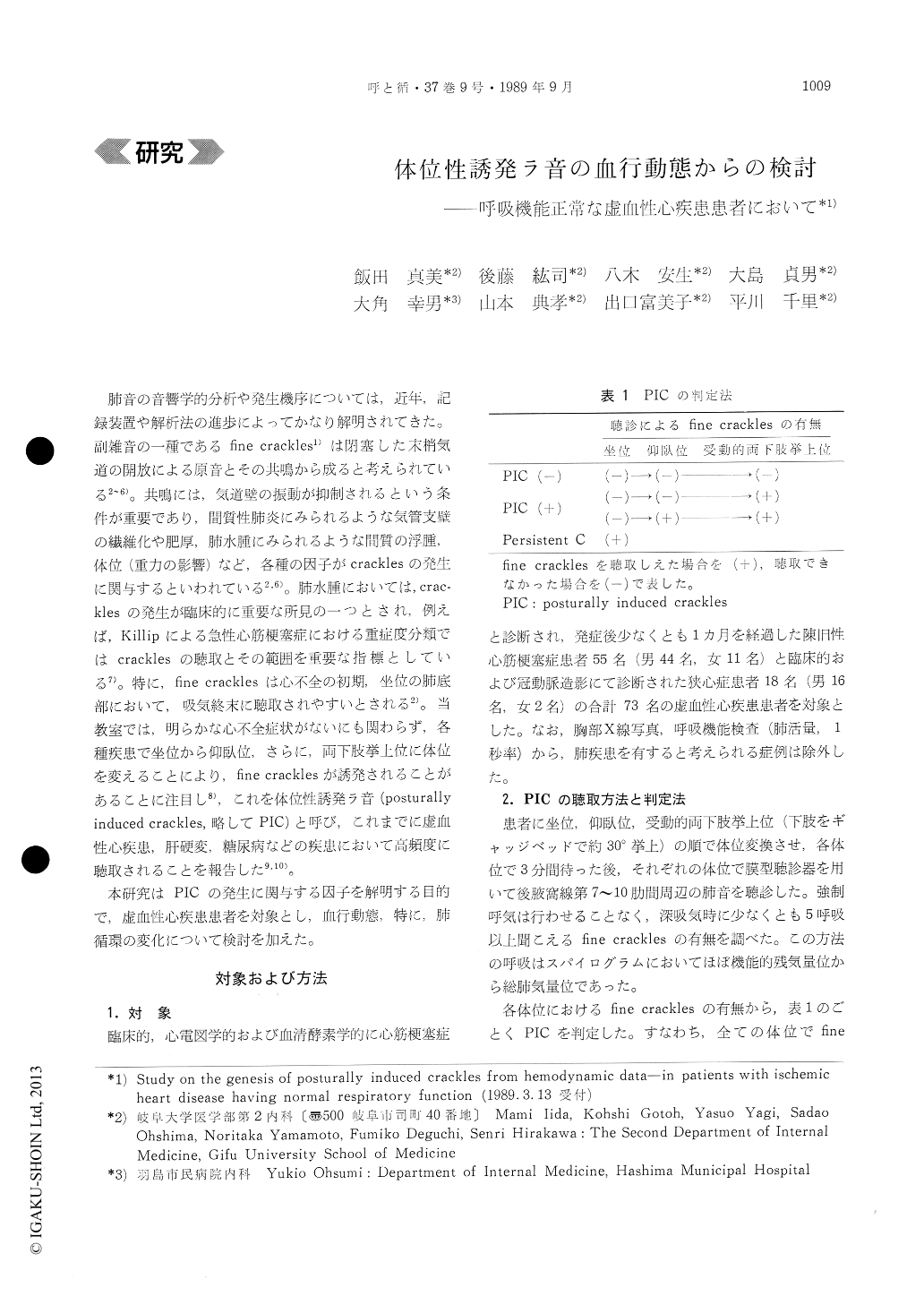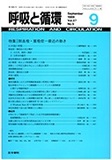Japanese
English
- 有料閲覧
- Abstract 文献概要
- 1ページ目 Look Inside
肺音の音響学的分析や発生機序については,近年,記録装置や解析法の進歩によってかなり解明されてきた。副雑音の一種であるfine crackles1)は閉塞した末梢気道の開放による原音とその共鳴から成ると考えられている2〜6)。共鳴には,気道壁の振動が抑制されるという条件が重要であり,間質性肺炎にみられるような気管支壁の繊維化や肥厚,肺水腫にみられるような間質の浮腫,体位(重力の影響)など,各種の因子がcracklesの発生に関与するといわれている2,6)。肺水腫においては,crac-klesの発生が臨床的に重要な所見の一つとされ,例えば,Killipによる急性心筋梗塞症における重症度分類ではcracklesの聴取とその範囲を重要な指標としている7)。特に,fine cracklesは心不全の初期,坐位の肺底部において,吸気終末に聴取されやすいとされる2)。当教室では,明らかな心不全症状がないにも関わらず,各種疾患で坐位から仰臥位,さらに,両下肢挙上位に体位を変えることにより,fine cracklesが誘発されることがあることに注目し8),これを体位性誘発ラ音(posturallyinduced crackles,略してPIC)と呼び,これまでに虚血性心疾患,肝硬変,糖尿病などの疾患において高頻度に聴取されることを報告した9,10)。
本研究はPICの発生に関与する因子を解明する目的で,虚血性心疾患患者を対象とし,血行動態,特に,肺循環の変化について検討を加えた。
The presence of fine crackles is suggestive of heart failure in patients without pulmonary disease. We have been interested in the clinical observation that fine crackles are frequently detected when posture was changed from sitting to supine positions or in patients going from sitting position to supine position with passive legs elevation in patients without obvious evidence of heart failure. We named these crackles, "the posturally induced crackles (PIC)", We have already reported that PIC was frequently detected in patients with ischemic heart disease.
The present study was performed to estimate the mechanism of the genesis of PIC and to clarify its significance. Seventy-three patients with ischemic heart disease were included in this study. Pulmonarysounds were ausculated in sitting and supine positions and during passive elevation of both legs in a supine position. Patients were divided into 3 groups accord-ing to the presence or absence of fine crackles, i. e., those in whom fine crackles were not detected in either position (PIC (-)), those in whom fine crackles were detected in a supine position or during passive elevation of both legs, but not in a sitting position (PIC (+)), and those in whom fine crackles were detected even in a sitting position (Persistent crac-kles). We measured various hemodynamic parameters (cardiac index, RA pressure, PA pressure and PAW) and parameters of pulmonary circulation (pulmonary blood volume, pulmonary "venous" compliance) in these 3 groups and comparisons were made between them. We obtained the following results : PAW at rest in supine position was significantly higher in PIC (+) group (10. 0±0. 7 mmHg, mean±SE, n=38) and in Persistent crackles group (11. 0±1. 8, n=13) compared with PIC (-) group (6. 2±0. 5, n=22) ; Pulmonary "venous" compliance was significantly lower in PIC (+) group (11. 1±0. 9 ml・mmHg-1) and in Persistent crackles group (8. 2±1. 0) compared with PIC (-) group (14. 9±1. 2); And, the volume-pressure curve in the pulmonary "venous" system was situated in the lower right part of this plane in order of PIC (-), PIC (+) and Persistent crackles groups, and the slope of the curves were also less steep in the same order.
These results suggest that in PIC (+ ) group, vascular beds of the pulmonary "venous" systems, active as a reservoir of the left ventricle, became very stiff, and when PAW was elevated slightly under such a condition, closing of the small airway would occur, leading to the genesis of fine crackles. Therefore, PIC is considered to a useful non-invasive simple method for screening patients with latent heart failure.

Copyright © 1989, Igaku-Shoin Ltd. All rights reserved.


